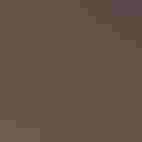Eastern Towhee
At a Glance
Sometimes secretive but often common, this bird may be noticed first by the sound of industrious scratching in the leaf-litter under dense thickets. In the nesting season, males become bolder, singing from high perches. In some areas this bird is commonly known as 'Chewink,' after the sound of its callnote. In parts of the Southeast and Florida, the towhees have white eyes.
All bird guide text and rangemaps adapted from Lives of North American Birds by Kenn Kaufman© 1996, used by permission of Houghton Mifflin Harcourt Publishing Company. All rights reserved.
Category
New World Sparrows, Perching Birds
IUCN Status
Least Concern
Habitat
Fields, Meadows, and Grasslands, Forests and Woodlands, Shrublands, Savannas, and Thickets, Urban and Suburban Habitats
Region
Eastern Canada, Florida, Great Lakes, Mid Atlantic, New England, Plains, Southeast, Texas, Western Canada
Behavior
Direct Flight, Flitter, Undulating
Population
29.000.000
Range & Identification
Migration & Range Maps
Many southern birds are permanent residents; most in the North are migratory.
Description
7-8 1/2" (17-22 cm). Dark hood and rusty sides set off by white stripe down center of belly. Upperparts mostly black (male) or chocolate-brown (female). Tail has big white corners. Compare to American Robin. Eyes usually red; white-eyed form occurs in Florida.
Size
About the size of a Sparrow, About the size of a Robin
Color
Black, Brown, Orange, Red, Tan, White
Wing Shape
Broad
Tail Shape
Long, Rounded
Songs and Calls
The song varies, often with a few introductory notes and usually ending with a long trill, such as drink-your-teeaaa or to-wheeeee. Call is an inquisitive meewww?
Call Pattern
Flat, Rising, Undulating
Call Type
Chirp/Chip, Trill, Whistle
Habitat
Open woods, undergrowth, brushy edges. Habitat varies with region, but always in brushy areas. In the Northeast, typically in understory of open woods.
Sign up for Audubon's newsletter to learn more about birds like the Eastern Towhee
Behavior
Eggs
3-4, sometimes 5, rarely 2-6. Creamy white to very pale gray, with spots of brown often concentrated at larger end. Incubation is mostly or entirely by female, about 12-13 days.
Young
Both parents feed the nestlings. Young leave the nest about 10-12 days after hatching, may remain with parents for some time thereafter. Often 2 broods per year, sometimes 3 in southern part of range.
Feeding Behavior
Forages mostly on the ground, frequently scratching in the leaf-litter. Also sometimes forages up in shrubs and low trees.
Diet
Mostly insects, seeds, berries. Diet varies with season and region. Eats many insects, especially in summer, including beetles, caterpillars, moths, true bugs, ants, and many others, also spiders, snails, and millipedes. Rarely may eat small salamanders, lizards, or snakes. Also eats many seeds, plus acorns, berries, and small fruits.
Nesting
Male defends nesting territory by singing, often from a high perch. In courtship, male may give a soft "whispered" version of song, may chase female, or may rapidly spread tail to show off white spots. Nest site is on the ground under a shrub, or in low bushes, usually less than 5' above the ground. Nest (built by female) is an open cup of grass, twigs, weeds, rootlets, strips of bark, lined with finer materials, sometimes including animal hair.
Conservation
Conservation Status
Population in northeast has declined seriously in recent decades. Elsewhere, numbers are probably stable.
Climate Threats Facing the Eastern Towhee
Choose a temperature scenario below to see which threats will affect this species as warming increases. The same climate change-driven threats that put birds at risk will affect other wildlife and people, too.









